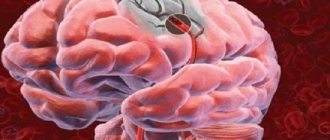Toxic neuropathy refers to common diseases of a neurogenic nature - chronic neurotoxic processes. The pathology is characterized by degenerative damage to the optic nerve fibers due to intoxication of the body with tobacco, alcohol products, drugs or methyl alcohol. The latter is the most dangerous substance, poisoning with which causes severe consequences for the organs and systems of the human body. Substances such as mercury and ethylene glycol can also cause the development of toxic neuropathy.
Most often, alcohol-nicotine intoxication and methyl alcohol poisoning lead to damage to nerve cells, in particular the optic nerve. Patients experience progressive vision loss. The degree of its decline depends on the following factors:
- severity of poisoning;
- degree of body resistance;
- presence of concomitant diseases.
Severe toxic damage to the optic nerve occurs with the simultaneous use of methyl alcohol and tobacco products.
A decrease in visual acuity in each patient occurs after a certain period of time after consuming a toxic substance. Violations can occur either after two hours or after several days.
The cause of the disease can be the harmful effects of certain medications. Pharmacological agents with similar side effects include antitumor drugs, fluoroquinolones, quinine, sulfacetamide, streptomycin and many others.
Treatment with ethambutol can also serve as a provoking factor for toxic neuropathy. Ethambutamol is used in the treatment of tuberculosis, but has many side effects and has a negative effect on the organs of vision. Therefore, treatment with this drug should be under medical supervision. Regular examinations with an ophthalmologist are recommended.
The essence of the violation
Every day a person encounters toxic substances . This could be household chemicals, low-quality food, cheap cosmetics. People who are forced to work with pesticides and poisonous substances are at risk.
Everyone knows that harmful substances can poison the body, but not everyone knows how this happens.
When a toxic substance or low-quality food enters the body, a mechanism is launched to actively utilize them . The immune system is activated, producing special leukocyte cells that allow you to overcome toxins before they settle in the body.
When the body fails to cope, extensive intoxication develops, in which human health is at risk. Toxins are able to penetrate any cells and tissues of the body, disrupting natural biological processes, including metabolism. As a result, vital organs and entire systems begin to suffer, since the body clearly does not receive enough nutrients.
Based on the nature of toxins entering the body, toxic polyneuropathy can be divided into two large groups:
- Endogenous – intoxication occurs inside the body with toxins that are synthesized by the body itself in the presence of any disease. This includes inflammatory processes of the gastrointestinal tract, genitourinary system, respiratory system, etc.
- Exogenous – toxins enter the body from the environment. This could be poisoning from poisons, chemicals, or stale foods.
Young children quite often develop neurotoxicosis, when, under the influence of prolonged dehydration, symptoms of neuropathy develop, the cause of which is a banal acute respiratory infection.
Diphtheria polyneuropathy
From the name of the disease it is clear that it occurs as a result of a severe form of diphtheria, accompanied by exposure to an exotoxin. Most often, this phenomenon occurs in adult patients. In this case, there is an impact on the membranes of the nerves of the skull and their destruction. Symptoms of the disease manifest themselves either in the first week (especially dangerous with cardiac arrest and pneumonia), or after the 4th week from the moment of infection.
They are expressed by damage to the functions of the eyes, speech, swallowing, difficulty breathing and tachycardia may occur. Symptoms almost always begin to disappear after 2-4 weeks or several months.
Classification
The peculiarities of the pathology are that its type and treatment method completely depend on which group of toxins provoked the polyneuropathy. If we consider toxic polyneuropathy from the point of view of the duration and frequency of exposure to the provoking factor, then we can distinguish the following classification :
- Chronic toxic polyneuropathy - develops as a result of the progression of the underlying disease, which is characterized by a chronic course.
- Acute toxic polyneuropathy - occurs as a result of poisoning with pesticides and highly toxic substances. It is characterized by an acute course and the need for emergency care, since its absence can cause death.
Based on what exactly caused the development of the disease, five types of intoxication :
- Drug intoxication occurs due to the use of a large number of medications, which, when activated in the body, adversely affect the functioning of the stomach, liver and excretory system. Usually the diagnosis is accompanied by a list of medications that could provoke drug intoxication. Children and patients suffering from chronic diseases are at risk.
- Alcohol intoxication - includes the harmful effects of ethyl alcohol toxins on the entire body. Patients who have taken a large amount of alcohol at one time, as well as people who constantly use it, are at risk.
- Radiation toxicity develops as a side effect after radiation therapy in the fight against cancer. Radiation sickness can also result from prolonged exposure to radiation at work or in research centers.
- Food intoxication - caused by poisoning with low-quality products that contain a large number of pathogenic microorganisms, for example, Shigella, Salmonella. It has an acute course with characteristic signs of dehydration.
- Intoxication with poisons and toxic substances - develops due to toxic substances entering the body. Requires the introduction of an antidote that neutralizes the poison. Otherwise, death may occur.
A particularly dangerous form of toxic polyneuropathy is alcohol-drug polyneuropathy , when a person abuses alcohol while constantly taking medications.
When combined with certain medications, alcohol can cause bradycardia and slow breathing, which can cause death in high doses.
This classification helps the doctor quickly decide on first aid methods, as well as further treatment.
Alcoholic neuropathy
In medicine, there is an opinion that toxic polyneuropathy due to alcohol has not been studied enough, and the mechanism of its development is not fully understood.
The main reason is thiamine deficiency in the body and gastroduodenitis, which occurs due to alcohol abuse. In addition, alcohol itself has a toxic effect on the nervous system.
https://www.youtube.com/watch?v=https:accounts.google.comServiceLogin
Toxic alcoholic polyneuropathy can be subacute, acute, but most often there is a subclinical form, detected during examination of the patient. It is expressed in a slight impairment of the sensitivity of the feet, degradation or absence of Achilles tendon reflexes, and pain in the calf muscles upon palpation.
Often toxic polyneuropathy is expressed in symmetrical paresis, atrophy of the flexor muscles of the feet and fingers, decreased sensitivity of the “glove” and “sock” areas, pain in the feet and legs of a constant or shooting type, burning in the soles, swelling, the appearance of ulcers and hyperpigmentation of the skin of the extremities.
Provoking factors
There is nothing sterile in the world, and people come into contact with toxic substances every day.
Few people think that ordinary dishwashing detergent can penetrate the skin and accumulate in the body, causing intoxication, an allergic reaction, after which polyneuropathy develops.
Most often, the development of toxic polyneuropathy can be caused by :
- Poisoning from low-quality food products.
- Constant contact with household chemicals without appropriate protective equipment.
- Alcohol abuse, especially chronic alcoholism.
- Taking medications in incorrect dosages that exceed the permissible daily allowance.
- Presence of diabetes mellitus and other chronic diseases.
- Contact with radiation that has a harmful effect on the body.
- Herpetic and diphtheria polyneuropathy.
- Contact with lead, cadmium, barium, mercury in hazardous enterprises.
Acute toxic polyneuropathy requires immediate medical attention, while the chronic form may not be as life-threatening, but also requires some attention.
Toxic polyneuropathy affects predominantly the lower and upper extremities, which is facilitated by a number of predisposing factors, including:
- Insufficient development of the barrier function in relation to the pathological effects of toxins.
- Increased risks of developing hypoxia, which entails a failure in the metabolic processes of the limbs.
- Loads on the distal limbs, causing frequent muscle contractions.
Article on the topic: Review of injections for osteochondrosis
Lead polyneuropathy
This type of disease occurs due to lead poisoning, which can enter the human body through breathing or through the gastrointestinal tract. It is deposited in the bones and liver. Lead toxic polyneuropathy (ICD 10 code - G62.2) is expressed in the patient in the form of lethargy, high fatigue, “dull” headache, decreased memory and attention, encephalopathy, anemia, colitis, pain in the limbs, tremor of the hands. This disease is characterized by damage to the radial and peroneal nerves. Therefore, “dangling hand” and “cock gait” syndromes often occur. In these cases, contact with lead is completely limited. The prognosis for recovery from the disease is favorable.
The influence of heredity on the disease
There is no direct inheritance of toxic polyneuropathy, but there are still some prerequisites for the development of the disease that are inherited. This includes diabetes mellitus, which itself is not inherited, but can appear in blood relatives. People with alcohol addiction are also at risk. Coding genes, in the presence of favorable conditions, can make themselves felt, which will subsequently lead to the development of polyneuropathy.
But the disease itself cannot be inherited.
Symptoms
The clinical manifestations of the disease depend on the degree of damage to the nerve fibers, as well as on the main provoking factor.
The strongest and fastest to manifest are the symptoms of intoxication with pesticides and toxic substances.
Disorders of tactile sensations can manifest themselves as follows:
- inability to distinguish cold from heat;
- paresthesia in the form of goosebumps, especially in the calf muscles;
- decreased manifestation of reflexes, up to their complete inhibition;
- lack of strength in the legs and arms, which manifests itself in unsteady gait and the inability to lift heavy objects.
Toxic polyneuropathy, which develops over time, can be aggravated by symptoms such as :
- Disruption of metabolic processes, in particular, decreased sweating and, as a result, increased swelling of the hands and feet.
- Paleness of the skin of the extremities, which does not depend on the ambient temperature.
- Coldness of the extremities even in the summer, which is explained by impaired blood conductivity and decreased metabolism at the intercellular level.
- Diabetic foot, which is characterized by flattening of the limb, swelling and the appearance of trophic ulcers.
- Bursting pain that intensifies when moving the limbs.
- Intestinal dysfunction, decreased peristalsis, which leads to the development of constipation.
- Slowing of respiratory function, which is caused by damage to the diaphragmatic muscles.
If we consider the frequently occurring symptoms of toxic polyneuropathy from the point of view of the provoking factor, then we can identify such characteristic manifestations as :
Lead intoxication - sensitivity remains the same, while gait is impaired, feet and hands become visually heavy.
Accompanied by cramping abdominal pain, absent-mindedness and anemia.
Intoxication with medications - there is a decrease in sensitivity, suppressed reflexes and increasing joint pain. Against the background of paresis and muscle pain, concentration may decrease, up to loss of consciousness.
Intoxication due to severe infections (diphtheria, whooping cough, malaria) - mainly the brain is affected, which is expressed in impaired reflexes, especially breathing and swallowing, the development of tachycardia and arrhythmia, and semi-fainting.
Alcohol intoxication – there is acute pain in the calf muscles, paresis of the arms and legs, decreased sensitivity of the skin, as well as symptoms of acute intoxication.
Polyneuropathy due to HIV
In two out of three cases, patients with HIV infection experience neurological complications, and most often they occur in the last stages of the disease.
The toxic effect of the virus, autoimmune reactions, secondary infection, the development of tumors and the consequences of taking drugs in combination lead to disruptions in the normal functioning of the body. The result is encephalopathy, meningitis and polyneutropathy of the cranial nerves. The latter ailment is often expressed in decreased sensitivity of the feet and pain in the lumbosacral region. They are treatable, but can have fatal complications.
Diagnostics
To make an accurate diagnosis, it is necessary to determine the type of toxin and the duration of its effect on the body. This happens in three stages:
Anamnesis collection - the patient is asked about symptoms, the frequency of their manifestations, hereditary diseases, as well as lifestyle and working conditions.
During examination and palpation of the most painful areas, the doctor gives a referral to a neurologist in order to assess the degree of damage and localization of innervation.
Laboratory testing - they take blood for sugar, conduct a general and biochemical blood test, as well as a blood test for HIV and syphilis. They also donate urine and feces, where the presence of sugar, pathogenic microorganisms and helminths is detected. In rare cases, a nerve biopsy may be required if the toxicity is caused by arthritis.
Instrumental examination helps determine the degree of damage to nerve conduction, as well as damage to other vital organs and systems. The following studies are most often prescribed:
- Electromyography - shows localized areas with a lack of nerve impulse conduction.
- Abdominal ultrasound helps assess the extent of damage to the liver, kidneys and stomach from toxins.
- MRI and CT - prescribed when the patient is unconscious or the lesions are large-scale.
Treatment
Therapy is carried out in several stages :
- Resuscitation - consists of removing toxins from the body as quickly as possible, as well as maintaining vital functions.
- Basic therapy helps to overcome the negative effects of intoxication, as well as remove all toxins.
- Maintenance therapy – normalizes metabolic processes and corrects the functioning of the body.
Several groups of medications can be used, including:
Article on the topic: Carefully read the instructions for using Ketorol tablets
Vitamins – help normalize metabolic processes in the body, helping to restore all processes. Most often, vitamin complexes with a predominance of B vitamins are prescribed.
They help strengthen the nerve fiber, normalize conductivity and restore sensitivity.
The most common of them are:
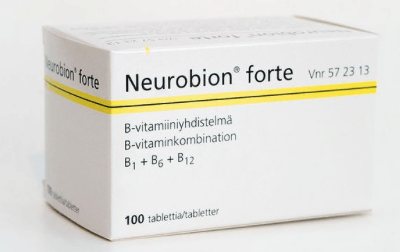
Neurobion - contains neurotropic vitamins that help strengthen axonal connections and restore the conductivity of nerve impulses. Suitable for long-term use, as it causes virtually no adverse reactions. Not prescribed in case of individual intolerance. Price – 230-260 rubles.
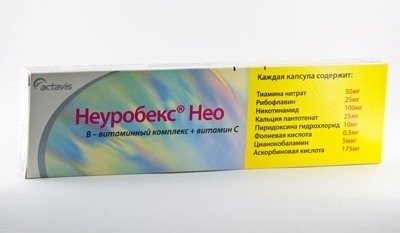
Preparations for improving the conductivity of nerve impulses - help restore the conductivity of nerve impulses by activating natural regeneration processes, as well as reducing the need of cells for oxygen.
The most effective of them are:
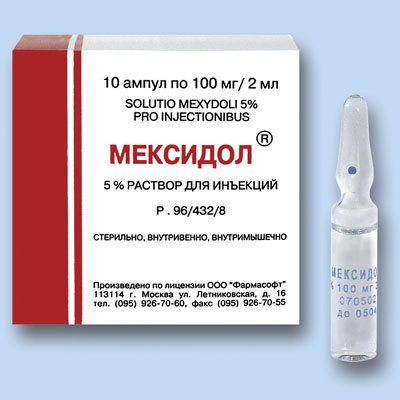
Mexidol - has a complex effect, normalizing metabolic processes and increasing cell resistance to hypoxia. Not used for pathologies of the liver and kidneys. Price – 280-310 rubles.

Not prescribed for hemorrhagic stroke or increased tendency to bleed. Price – 310-350 rubles. Glucocorticoids are necessary to reduce pain, swelling and discomfort, which is achieved by blocking the body's immune reactions and reducing the synthesis of pain mediators. Most often, they are administered in the first hours after intoxication is detected, which helps reduce the manifestation of an allergic reaction. It can be:

Prednisolone - affects the synthesis of hormones of the adrenal cortex, having an antihistamine and moderate analgesic effect. Not used for hypertension, arrhythmia and kidney inflammation. Price – 280-350 rubles.
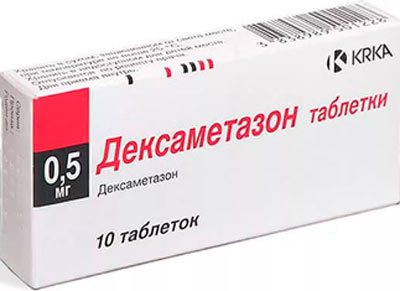
Blocks the growth of the immune response to an irritant. Not used in case of individual intolerance. Price – 20-25 rubles for 1 ampoule. Other medications – the following first aid medications may be used:
- isotonic solution;
- sodium thiosulfate;
- anti-diphtheria serum (for diphtheria);
- tetacin-calcium (for lead intoxication);
- atropine sulfate (for FOS poisoning);
- dimercaprol (for mercury poisoning);
- unithiol (for arsenic poisoning).
Physiotherapy
Physiotherapeutic procedures are an auxiliary treatment method that is used after the end of the acute phase of the disease.
The most common and effective of them are:
Electrical stimulation is the application of alternating current to muscles, causing them to contract and relax alternately.
The procedure helps eliminate tone, improve metabolic processes in the limbs, and normalize nerve conduction.
Plasmapheresis is a technique used to remove toxins and harmful substances from the blood as quickly as possible. For this, a person is connected to a special device that collects venous blood, filters it and enriches it with blood cells, as well as returns it back to the circulatory system. The procedure has proven itself well for damage to the liver and kidneys.
Other methods - to restore the conductivity of the nerve impulse, baths with therapeutic mud, paraffin baths, medicinal electrophoresis and magnetic therapy can also be used.
Complications and consequences
In severe cases of toxic chemical poisoning, even if the patient survives, complications such as:
- damage to the liver and kidneys, the need for constant artificial filtration of blood;
- loss of sensation in the limbs;
- amputation of feet or hands;
- paralysis;
- inability to move independently, disability;
- disruption of the functioning of all vital organs and systems.
The outcome can be fatal, so first aid includes the need to administer an antidote when poisoning with harmful chemicals and poisons is detected.
Polyneuropathy after chemotherapy can provoke the development of anemia, which requires maintenance therapy.
We recommend watching the following video
Clinical picture of the pathology
With toxic neuropathy, both organs of vision are simultaneously damaged to the same extent
.
This pathology is accompanied by deterioration of central vision and a significant narrowing of the visual fields. With such a complication as optic nerve atrophy, visual acuity decreases and color perception is lost. In most cases, patients have difficulty distinguishing movements before their eyes. If disturbances of a different nature occur in the eyes, then their cause is most likely another disease.
Prevention
Polyneuropathy of the lower extremities or other parts of the body can be prevented, which involves eliminating the cause of the disease. In this case, it is recommended to completely exclude alcoholic drinks. If this is not possible, then you should limit their use and take small doses only on weekends.
If possible, you should give up bad habits and lead a healthy lifestyle, devoting time to sports and physical activity. Don't forget about nutrition. Giving up fast food and fatty foods will not only help improve metabolic processes and improve health, but also get rid of excess weight, which is especially important if you have diabetes.
Thus, toxic polyneuropathy is provoked by the ingestion of toxic substances, poor-quality food or poisons into the body.
Correctly provided first aid will help save a person’s life, and also make the rehabilitation process more progressive.
Only an integrated approach to treatment will help restore strength and confidence to the body. Along with taking medications, massage, exercise therapy and physiotherapeutic procedures will be required.





